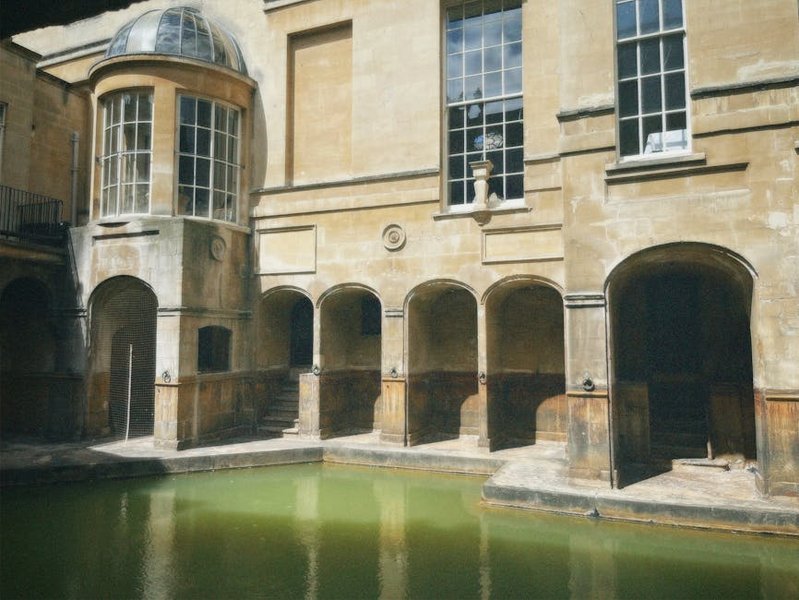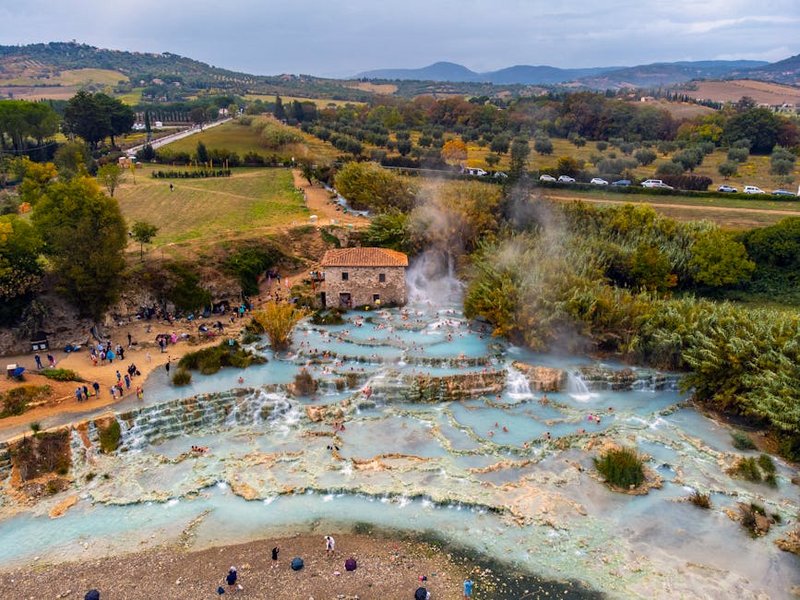Budapest Thermal Baths: Your Ultimate Guide to the City of Spas
Budapest thermal baths represent one of Europe’s most unique and rejuvenating travel experiences, offering visitors the chance to soak in centuries-old healing waters while surrounded by stunning architecture. Known as the “City of Spas,” Budapest sits on over 100 thermal springs that deliver millions of liters of mineral-rich water daily at temperatures ranging from 68°F to 170°F (20°C to 77°C). These thermal baths have been central to Hungarian culture since Roman times, with the Turkish occupation in the 16th century leaving behind magnificent Ottoman bathhouses that still operate today. Whether you’re seeking therapeutic benefits, architectural wonder, or simply relaxation, Budapest’s thermal bath culture provides an unforgettable experience that combines wellness, history, and social tradition in a way you won’t find anywhere else in Europe.
Budapest Thermal Baths Essential Information – History and Benefits
The tradition of thermal bathing in Budapest dates back over 2,000 years to Roman times when the settlement of Aquincum featured extensive public baths. The Ottomans later expanded this culture during their 150-year rule, constructing magnificent bathhouses that still function today. What makes Budapest thermal baths particularly special is the unique mineral composition of the waters, which contain calcium, magnesium, hydrogen-carbonate, and sulfate, along with significant fluoride content. These minerals are known to help with joint problems, circulation issues, and various inflammatory conditions. The thermal waters emerge from springs at depths of 4,000-6,000 feet (1,200-1,800 meters), where they absorb minerals and heat from volcanic rock formations beneath the city.
Types of Thermal Baths and Their Characteristics
- Historic Turkish baths feature original Ottoman architecture with domed ceilings, octagonal pools, and traditional marble surroundings dating back to the 16th century
- Art Nouveau medicinal baths offer grand, ornate settings with specialized treatments for specific health conditions under medical supervision
- Modern wellness complexes combine traditional thermal pools with contemporary spa facilities, saunas, and additional amenities for comprehensive relaxation
- Outdoor adventure baths feature wave pools, water slides, and recreational activities alongside thermal pools for family-friendly experiences
- Basic entry to smaller baths like Király or Rudas starts at $15-20 USD with cabin rental, offering authentic experiences without luxury amenities
- Standard entry to major baths like Széchenyi or Gellért ranges from $25-35 USD including cabin or locker, with additional fees for premium services
- Premium experiences with massages, treatments, and private cabin access can reach $80-150 USD depending on services selected and bath popularity
- Official Budapest Tourism Guide to Thermal Baths
- UNESCO World Heritage Site Information on Budapest
Health Benefits and Therapeutic Properties
The mineral-rich waters of Budapest thermal baths provide numerous documented health benefits that have attracted visitors for centuries. The thermal waters are particularly effective for musculoskeletal conditions, with many visitors reporting relief from arthritis, joint pain, and spinal issues after regular bathing. The combination of warm water and minerals improves blood circulation, reduces inflammation, and promotes relaxation of tense muscles. Beyond physical benefits, the thermal experience offers mental wellness advantages, reducing stress and anxiety through the combination of warm water immersion and the tranquil atmosphere of these historic spaces. Many baths offer medical consultations and prescribed treatment plans for those seeking specific therapeutic outcomes.

Budapest Thermal Baths Planning Your Trip – Practical Considerations
Planning your visit to Budapest thermal baths requires some strategic thinking to maximize your experience while navigating the practicalities of these unique facilities. First, consider whether you prefer a more medicinal, traditional experience or a recreational, modern approach to thermal bathing. The time of year significantly impacts your experience—outdoor pools are magical in winter when steam rises into cold air, while summer visits allow for sunbathing between dips. Weekdays generally offer quieter experiences than weekends when locals flock to the baths. Most baths open around 6:00-7:00 AM and close between 8:00-10:00 PM, with some offering night bathing sessions. Always check individual bath websites for special events or maintenance closures before your visit.
Best Time to Visit Budapest Thermal Baths
The ideal time for experiencing Budapest thermal baths depends largely on your preferences and tolerance for crowds. Spring (April-May) and autumn (September-October) offer pleasant temperatures for enjoying both indoor and outdoor pools without extreme summer heat or winter cold. Summer months bring warmer weather perfect for outdoor pools but also larger crowds of tourists. Winter provides a uniquely magical experience as steam rises dramatically from outdoor pools into the cold air, creating an almost mystical atmosphere—especially enchanting during evening hours when baths are illuminated. For avoiding crowds, visit on weekday mornings when most tourists are still sightseeing and locals are at work.
Budget Planning and Costs
Essential Preparation Checklist
Proper preparation significantly enhances your Budapest thermal baths experience. Bring two swimsuits—one for wearing while the other dries—as you’ll likely move between pools of different temperatures. Pack waterproof sandals or flip-flops for walking between pools and facilities, as barefoot walking is often uncomfortable on hot surfaces. Most baths require a swimming cap for certain pools (especially medicinal pools), so bring one or purchase onsite. Don’t forget a towel, though rentals are available for approximately $5 USD. Hydration is crucial when alternating between hot pools and cooler areas, so bring a water bottle. Finally, consider bringing a waterproof case for your phone if you plan to take photos in humid environments.
Budapest Thermal Baths Top Attractions and Activities – Must-Visit Baths
Budapest offers an incredible variety of thermal bath experiences, each with its own unique character, history, and amenities. The city’s most famous baths range from opulent Art Nouveau palaces to authentic Turkish-era structures, ensuring there’s something for every preference. The largest and most visited thermal complex is Széchenyi Baths in City Park, featuring 15 indoor pools and 3 grand outdoor pools that accommodate up to 2,000 bathers simultaneously. Gellért Baths dazzles visitors with its stunning Art Nouveau architecture, stained glass windows, and mosaic tiles that create a palatial atmosphere. For authentic Turkish ambiance, Rudas and Király Baths offer historic Ottoman-era environments with domed ceilings and traditional marble pools that transport visitors back centuries.
Must-See Highlights
No visit to Budapest thermal baths is complete without experiencing several iconic facilities that define the city’s bathing culture. Széchenyi Thermal Bath’s outdoor pools present an unforgettable sight with steam rising from bright turquoise waters against the backdrop of a magnificent yellow neo-baroque palace—particularly magical at night when illuminated. Gellért Baths deserves attention for its architectural splendor alone, with Art Nouveau details, stained glass domes, and marble columns that create a truly regal atmosphere. The rooftop pool at Rudas Baths offers panoramic views of the Danube River and Budapest landmarks—especially breathtaking at sunset. For something uniquely local, visit the less touristy Lukács Baths where Hungarians have received medical treatments for decades, maintaining an authentic therapeutic atmosphere.
Hidden Gems and Local Favorites
Beyond the famous tourist attractions, several lesser-known Budapest thermal baths offer equally rewarding experiences with fewer crowds and authentic local atmosphere. Dandár Baths in District IX provides a genuinely local experience in a beautiful 1930s building with affordable prices and mostly Hungarian visitors. The newly renovated Veli Bej Bath, part of the Rudas complex, offers a pristine Ottoman-era environment with intricate architectural details and a tranquil atmosphere. For those interested in medical treatments, Lukács Baths has been a center for medicinal bathing since the 19th century and maintains a serious therapeutic focus. Palatinus Strand on Margaret Island combines thermal pools with recreational water park features, making it perfect for families seeking both relaxation and fun.
Budapest Thermal Baths Practical Travel Information – Access and Amenities
Navigating Budapest thermal baths involves understanding the practical aspects of access, facilities, and cultural norms. Most major baths are easily accessible via Budapest’s efficient public transportation system, with metro stations and bus stops located conveniently nearby. Upon arrival, you’ll typically find a main entrance leading to a ticket counter where you can purchase entry passes and additional services. Most baths offer multiple changing options: cabins (private changing rooms) for approximately $3-5 USD extra or lockers for basic storage. The majority of facilities provide rental services for towels, swimwear, and other essentials if you forget yours. Many baths feature restaurants, cafes, or snack bars where you can refresh between soaking sessions.
| Service Category | Available Options | Price Range (USD) |
|---|---|---|
| Basic Entry | Locker access, pool use | $15-25 |
| Premium Entry | Cabin rental, robe, slippers | $30-45 |
| Massage Treatments | 30-60 minute therapeutic massage | $40-80 |
| Beauty Services | Facials, manicures, other treatments | $25-60 |
| Private Cabin | Exclusive changing facility | $8-15 extra |


